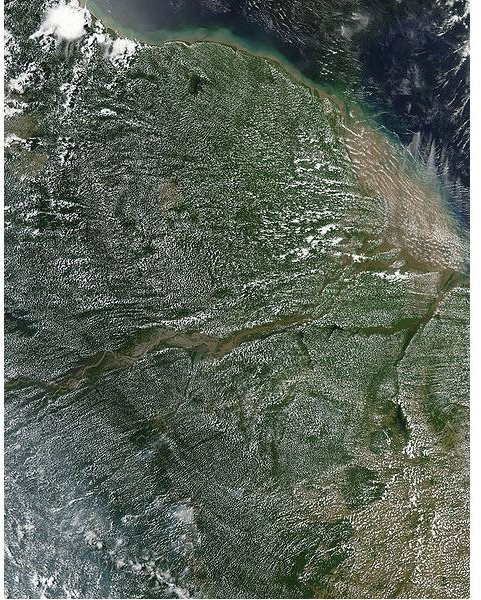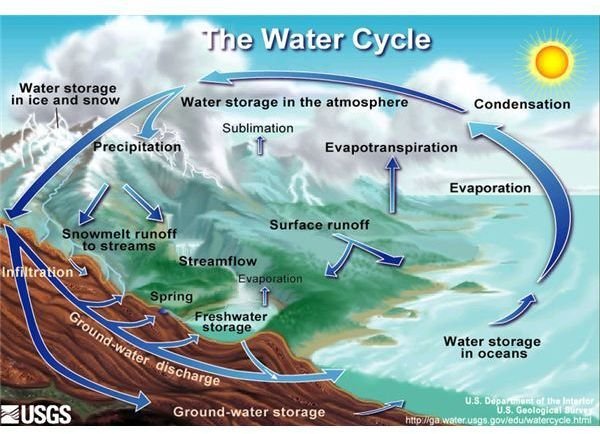Evaporation Water Cycle: What Is It and Why Does It Matter?
Introduction to Evaporation Water Cycle
Evaporation in the water cycle can be considered as the first step in the system. The world’s vast water resources provide the greater part of the evaporation complemented by evaporation from the plants and trees. Looking at the evaporation water cycle, we begin with an overview of the water system, moving on to examine where the evaporation process fits into this system.
An Overview Evaporation in the Water Cycle
The water cycle, also known as the hydrologic cycle, consists of the evaporation of water, snow and ice from various sources on land and sea in a continuous cycle. Evaporation is the first stage in this cycle, and its rate is governed by three important factors:
1. Temperature – the evaporation increases with temperature.
2. Wind – the higher the velocity of the wind, the more water is evaporated
3. Humidity- a low humidity enhances the evaporation rate.
The water is evaporated by the sun, forming vapor that rising up eventually forms the clouds. As the clouds rise higher, the vapor condenses and falls as precipitation, rain, sleet, snow or hailstones depending on the altitude and temperature.
The water cycle is shown diagrammatically below; please click on image to enlarge:
About Evaporation in the Water Cycle
Evaporation can be defined as the method or process of changing the state of a liquid to a vapor. In the case of the water cycle; evaporation is powered and controlled by the energy from the sun.
Evaporation takes place from the following locations:
1. The Oceans
- The world’s oceans cover about 75 percent of the Earth’s surface, and it is from the oceans that up to 85 percent of the evaporation in the water cycle originate; these particular oceans being located between the latitudes of 60ᴼN and 60ᴼS.
2. Rivers and Lakes
- When the water in rivers and lakes is evaporated, it leaves behind any impurities, so in a way evaporation in the water system is also a water purifier. However, these locations only hold less than one percent of the Earth’s fresh water resources.
3. Plants and Vegetation
Rainwater that has been intercepted by tree canopies, grass and vegetation is also evaporated by the heat from the sun, turning to vapor and entering the atmosphere.
4.Transpiration and Evapotranspiration
- Water that has fallen as precipitation infiltrates the ground where tree roots absorb the water re-directing it to the branches and stems outwards to the leaves, from where it exits through their stomata on the surface of the leaves. It is heated by the sun, evaporating to the atmosphere through a process known as transpiration. This is very relevant in large forests such as the Amazon Rain Forests where a capacious amount of water is transpired through the tree leaves. When evaporation from the land is combined with transpiration it is known as evapotranspiration.
An example of a leaf stomate and transpiration from the Amazon Rain Forest is shown below; please click on image to enlarge.


Summary of the Evaporation Water Cycle.
Evaporation is the first step in the system known as the water cycle. This is a continuous cycle of evaporation in the water cycle from the world’s water reservoirs that forms clouds and condensation in the form of precipitation from these clouds.
The vast majority of water is evaporated from the world’s oceans; almost 90 percent of it. On the land, vegetation and trees provide evapotranspiration along with rivers and lakes adding a source for evaporation in the water cycle. This whole system is powered by the heat from the sun providing the essential factors of temperatures, humidity and the strength of the wind.
References
1. Atmosphere, Climate & Enviroment, “Evaporation Factors,” https://www.ace.mmu.ac.uk/eae/weather/older/Evaporation.html
2, Author unknown, The Water Cycle, https://science.nasa.gov/earth-science/oceanography/ocean-earth-system/ocean-water-cycle/
3. Author unknown, What Causes Evaporation?, https://www.weatherquestions.com/What_is_evaporation.htm
